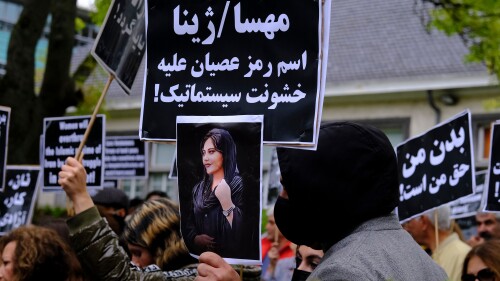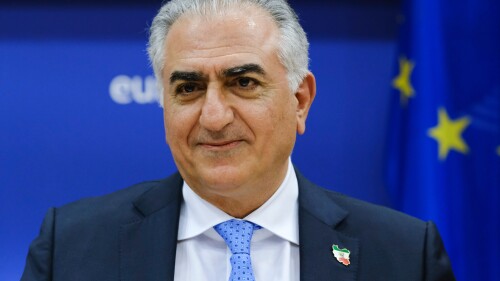Iran, home to approximately 17 percent of the world’s proven natural gas reserves, should be an energy powerhouse. Instead, its citizens face chronic gas and electricity shortages that disrupt daily life and cripple industries. This paradox is not due to resource scarcity but rather a regime prioritizing its survival over the well-being of its people.
Iran produces approximately 800-850 million cubic meters of natural gas daily, yet production has stagnated since 2012. This stagnation is primarily the result of systemic mismanagement, pervasive corruption, and international sanctions, all of which have hindered Iran’s ability to attract the necessary investment to meet its energy needs.
Unauthorized cryptocurrency mining has further strained the situation, consuming a significant portion of available electricity and placing additional pressure on the already overstretched grid.
Gas distribution reveals that approximately 25-28 percent is used for residential heating, while heavy industries and the power sector account for 20-27 percent and 30-32 percent, respectively. Inefficiencies, flaring, and transmission losses account for another 10-13 percent—double the global average. These losses, which have remained consistent over the past decade, have worsened due to increased damage to the gas distribution pipeline. Reports attribute these damages to aging infrastructure, insufficient maintenance, and potential sabotage, possibly linked to external or internal actors seeking to destabilize the regime or disrupt critical systems. These issues have compounded the gas supply challenges, leaving power plants with insufficient gas. Unauthorized cryptocurrency mining has further strained the situation, consuming a significant portion of available electricity and placing additional pressure on the already overstretched grid. As a result, electricity shortages have become widespread, with approximately 13 power plants shutting down in December 2024 because of insufficient fuel.
Iran’s electricity production reached 367,433 gigawatt hours in 2023, yet blackouts and power rationing remain commonplace, despite per capita electricity production being comparable to global averages. Residential and commercial users consume approximately 55 percent of electricity, particularly during seasonal peaks. Energy-intensive industries, including steel production and the oil and gas sector, account for around 27 percent of electricity consumption. Outdated infrastructure worsens the problem, with transmission and distribution losses of 15-20 percent, far exceeding the global standard of 5-10 percent. As power plants struggle with limited gas supplies, these inefficiencies exacerbate the already critical situation, leading to widespread blackouts.
With maximum pressure likely to resume when President-elect Donald Trump returns to office on January 20, 2025, unauthorized cryptocurrency mining has surged, serving as a crucial revenue stream for the regime. By September 2024, this practice consumed an estimated 800-900 megawatts of electricity daily—enough to power a medium-sized city of approximately 250,000 to 300,000 people. Although officially condemned, unauthorized mining has persisted, growing significantly after renewed talks of maximum-pressure sanctions. This reflects the regime’s desperation for hard currency to sustain its operations, further straining the electricity grid, intensifying blackouts, and leaving ordinary Iranians to bear the brunt of these policies.
To compensate for natural gas shortages, power plants rely increasingly on mazut, a low-quality fuel.
To compensate for natural gas shortages, power plants rely increasingly on mazut, a low-quality fuel. Burning mazut worsens air pollution and reduces efficiency, intensifying public health issues and environmental challenges. Meanwhile, the economic consequences are severe. Industrial production has slowed significantly, businesses face increased operational costs, and the economy reportedly loses approximately $5.5 million to $8 million daily due to outages. This stems directly from severe gas and electricity shortages that have crippled power plants and disrupted industrial output. Factories have halted operations, pushing owners to sell personal assets or grapple with mounting costs.
To manage these crises, the regime has implemented drastic measures. It has shut schools and universities, reduced working hours, and compelled many workers to shift to remote operations. These actions aim to conserve energy and stabilize a collapsing system, but they fail to address the structural issues driving the crisis. Instead, the regime has prioritized maximizing cryptocurrency mining as a source of revenue for its survival.
Iran’s leaders continue to channel resources toward maintaining their power, including funding groups like Hezbollah and the Houthis, while neglecting critical infrastructure. Public frustration mounts, with fears of widespread protests reignited by proposals to raise fuel prices by up to 50 percent. Similar measures in 2019 triggered nationwide demonstrations, met with violent suppression.
Iran’s energy crisis reflects the regime’s failures. With renewed maximum pressure sanctions looming, economic hardships will intensify, deepening public frustration and weakening the regime’s grip on power. With millions affected by worsening conditions and regional security at stake, a new uprising appears increasingly imminent.







